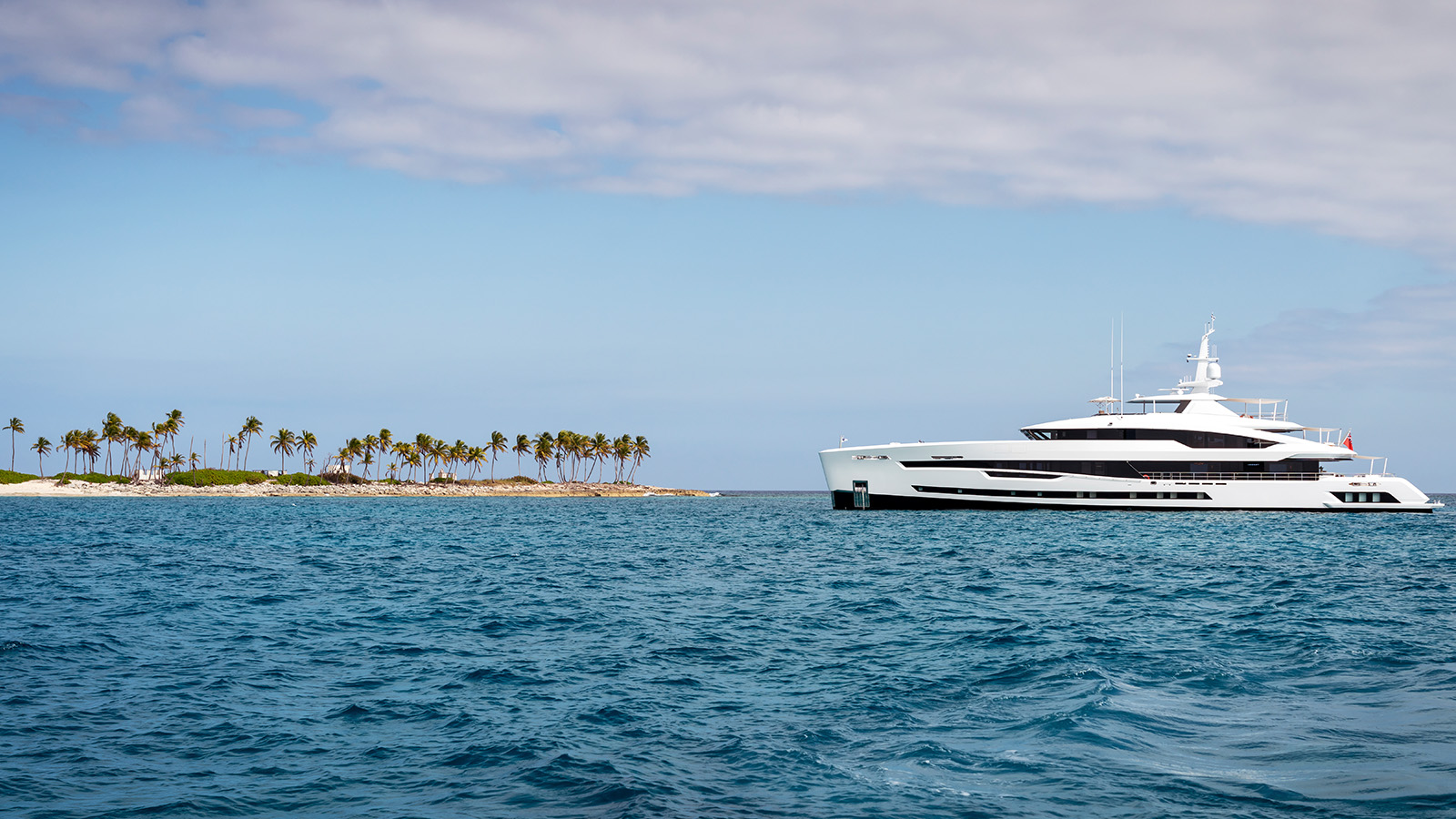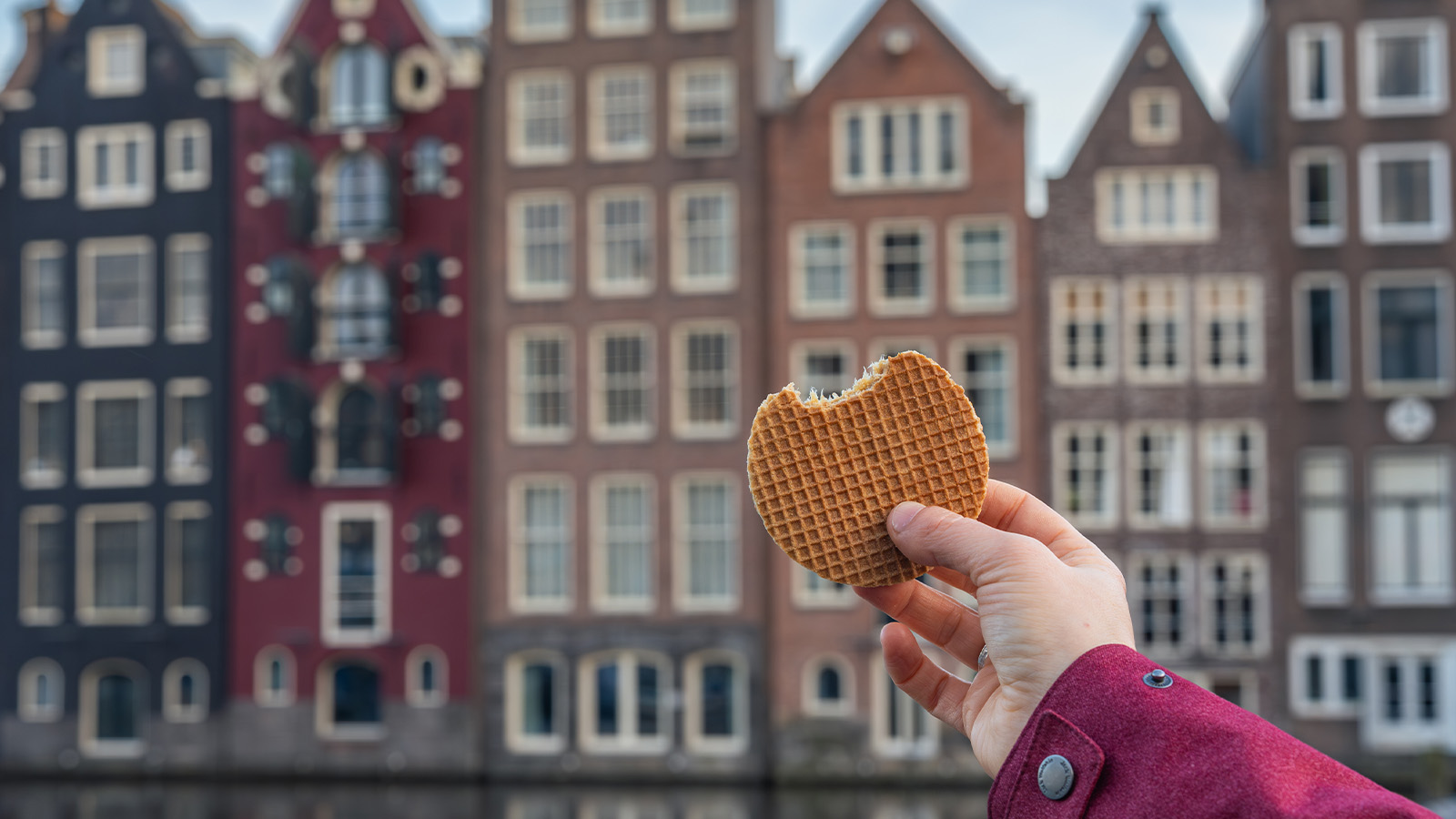Sweet design
Sticky and syrupy with an unmistakable round waffle design, the quintessential stroopwafel—meaning ‘syrup-waffle’—is a Dutch rite of passage. No visit to the Netherlands is complete without sinking your teeth into two layers of crisp, baked doughy goodness, filled with a generous layer of sweet, spiced buttery caramel syrup. Traditionally warmed over a steamy hot drink to melt the caramel (hence the name coffee toppers in Australia) or enjoyed as an indulgent on-the-go treat, this authentic street food has broken out far beyond its home turf to gain worldwide appeal.
While Heesen’s head-turning 57-metre yacht Santosha won a coveted 2024 Neptune at the World Superyacht Awards for its sustainably focused interior, the chewy stroopwafel (pronounced stroop-waa-fuhl) is defined by its distinct exterior design—a crisp savoury circular or oval shaped biscuit featuring the cross-hatched pattern of a waffle iron—and a hint of cinnamon to add a touch of spice. The delicious combination of textures and flavours makes it a hard-to-resist snack. Visit any Dutch market and you’ll be led by your nose to the nearest stroopwafel stand.
The first iterations were baked in Gouda in South Holland (best known for its cheese) in the late 18th century. It’s Gouda’s proximity to the North Sea that led to the stroopwafel’s key ingredient; a finely milled white Dutch cake flour called Zeeuwse bloem that is grown in a moderate maritime climate, which means it contains less starch, is moister (with an almost fatty feel) and has less thickening power. This is what gives the stroopwafel its distinctive chewy texture.
Dutch baker Gerard Kamphuisen is widely considered to have stumbled upon the invention by sweetening his leftover breadcrumbs and dough with syrup to create a tasty bite. If true, it dates the first stroopwafels between 1810, the year he opened his bakery, and 1840, the year of the oldest known recipe. Over time, other bakers cottoned on to the creation and gradually it evolved into the molasses, brown sugar and cinnamon treat enveloped in a caramel-filled waffle cookie that we know and love today.
By the mid-19th century there were around 100 stroopwafel makers in Gouda. Soon the sweet delicacy began to appear in other cities and demand drove them to be factory made. They proved particularly popular among the lower social classes who could not afford expensive baked goods, which, in the early days, led to the nickname armenkoeken, which translates to “poor man’s cookies.” Later, people began baking them at home with special irons that produced signature-thin waffles. Come the 1960s, more than 17 stroopwafel factories had sprung up in Gouda alone, of which four are still open, including one that traces its roots to Kamphuisen’s.
This delicious delicacy—loved by locals and tourists alike—tastes its best when served fresh, though that doesn’t prevent United Airlines from serving its domestic flight passengers the factory variety as a delicious breakfast snack. The humble stroopwafel also featured as a technical challenge on a 2017 episode of The Great British Bake Off. Even endurance athletes, such as runners, cyclists, and triathletes looking for an excellent source of quick energy during long sessions turn to the sweet treat for its high carbohydrate and sugar content. In fact, some brands, like Honey Stinger and GU Energy Labs have specifically developed stroopwafels for endurance athletes focusing on ingredients that support energy and performance, and former F1 driver Daniel Ricciardo is a fan.
Much like Heesen’s custom builds that push the boundaries of yacht design and engineering, bespoke varieties of the stroopwafel have appeared over the years, a case in point being longtime Amsterdam confectioner Lanskroon, whose creations are larger than standard, with a crisper, flatter exterior and an extra gooey interior. The 3Bros Canal House series uses limited-edition packaging that spotlights the architectural designs of Amsterdam canal houses. And while the classic stroopwafel features caramel, other variations include flavours like chocolate, coffee, or alternative caramel-based syrups.
Of course, the true mark of a runaway success is the raft of imitations that follow. In Lille in northern France, the gaufre fourrée lilloise—consisting of two thin wafer waffles filled with cassonade (brown cane sugar) and vanilla—sprung up at the renowned patisserie Maison Méert as early as 1849. Today in the Netherlands, wafers with honey in place of syrup are sold as honingwafels, and cookies baked with syrup are sold as stroopkoeken. The trimmings from factory-made stroopwafels are even sold in candy cones, neatly bringing the story full circle.
Fun facts about stroopwafels
- The 30 September is World Stroopwafel Day and is dedicated to honouring the beloved Dutch delicacy, not to mention the cultural heritage of the Netherlands, where the treat was born
- The largest stroopwafel ever recorded by Guinness World Records was created in Gouda, Netherlands, in 2013 by Stichting Gouda Oogst, measuring 2.47 metres in diameter. It took 60kg of dough, 30 litres of syrup and was more than 800 times larger than the regular stroopwafel
- In 2018, Dutch astronaut André Kuipers took stroopwafels with him to the International Space Station as part of his personal food stash
- Not all stroopwafels are round; some bakers create heart-shaped offerings as a romantic twist on the classic treat
- Where there is demand, there is commercial opportunity. Stroopwafels have become such a popular souvenir for tourists visiting the Netherlands that certain venues in Amsterdam successfully charge €13 each, leaving locals shaking their heads in disbelief
Words by Julia Zaltzman
Share
COME AND MEET US: YOU’RE INVITED!
Headquarters
Robert Drontmann Sales Director
| Eckly Hendriks Sales Manager
Sara Gioanola PR & Press Office Manager
Heesen Yachts Agents
Thom Conboy Agent North-America, Mexico, Bahama's & Caribbean
| Hisham Abushakra Agent for the Middle East region




